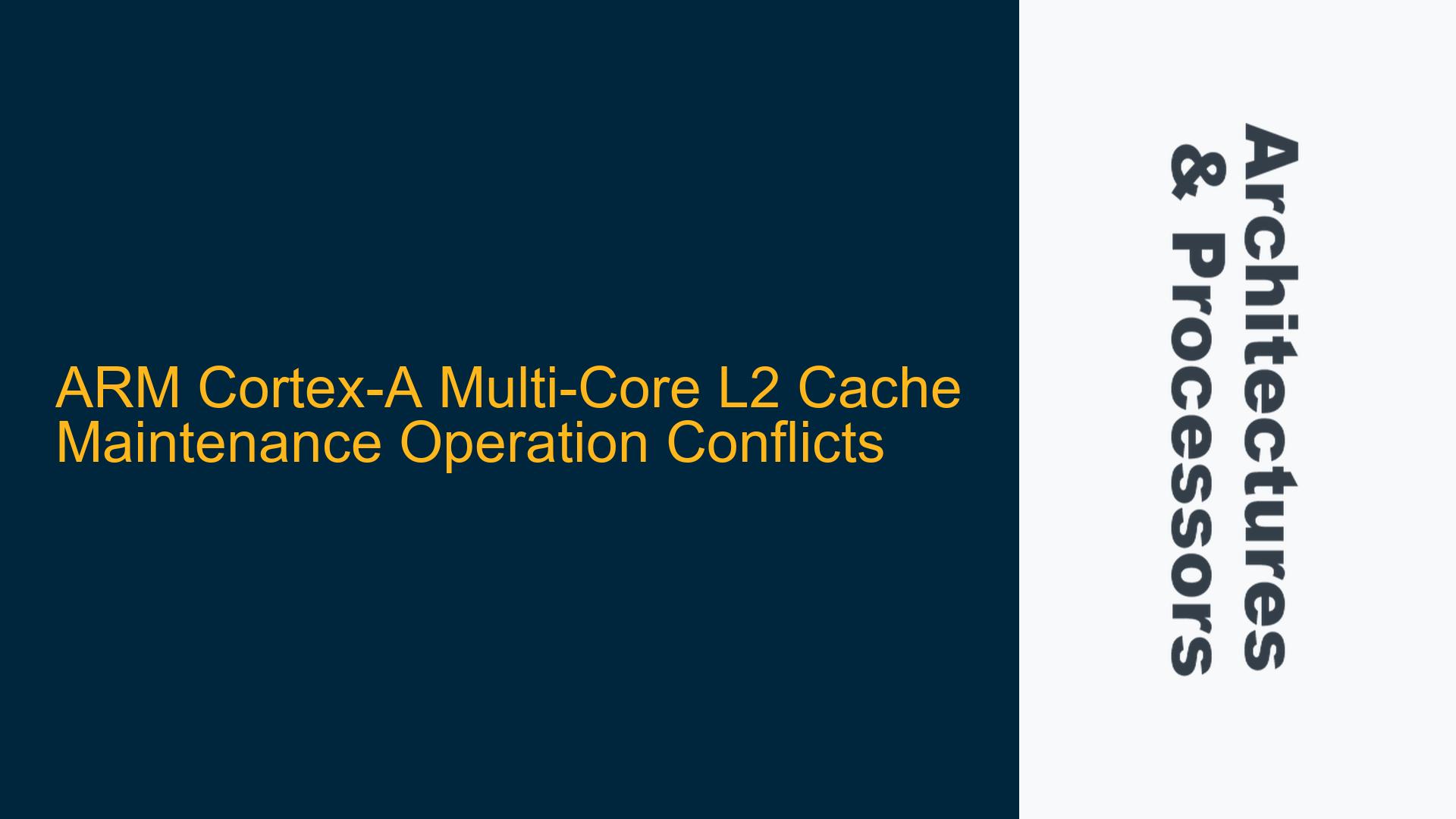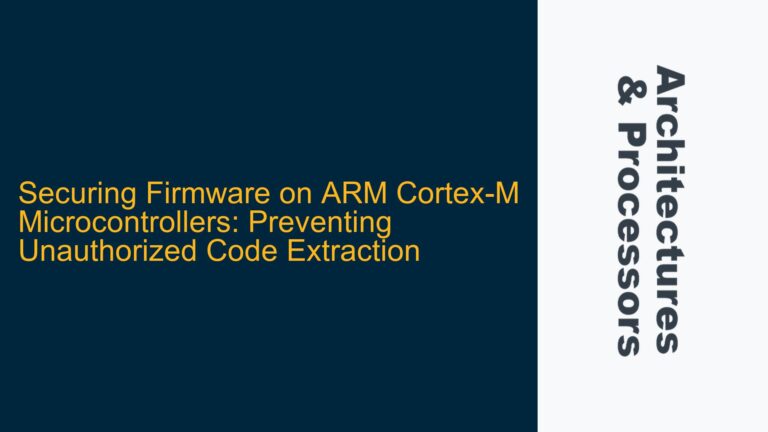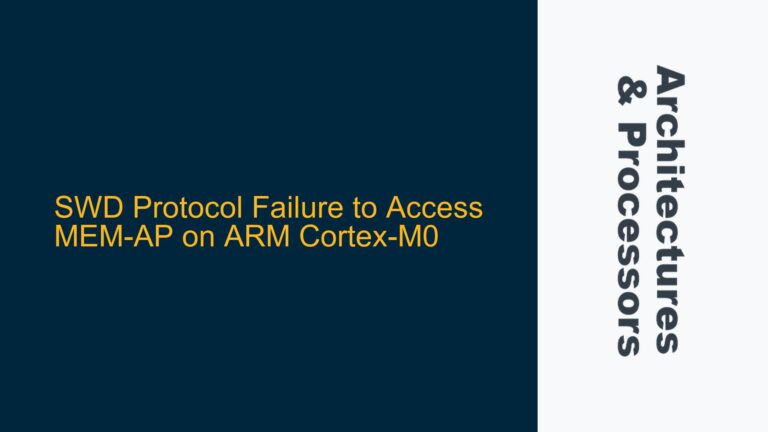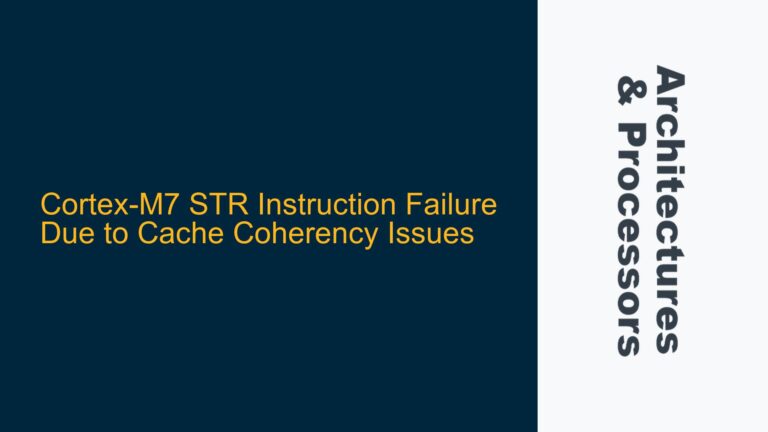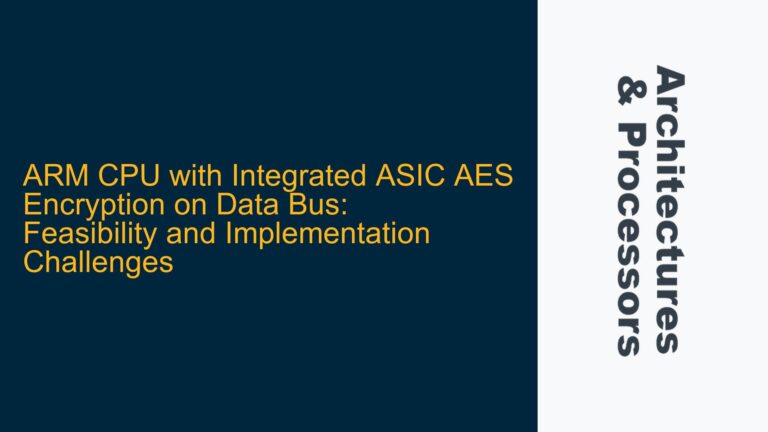ARM Cortex-A L2 Cache Maintenance Atomicity and Multi-Core Contention
In ARM Cortex-A processors, the L2 cache is a shared resource among multiple cores, and its maintenance operations, such as Clean and Invalidate Line by Physical Address (PA), are critical for ensuring cache coherency and data integrity. However, when multiple cores attempt to perform L2 cache maintenance operations simultaneously, particularly on different addresses, questions arise regarding the atomicity of these operations and potential contention issues. The L2C-310 cache controller documentation states that the Clean and Invalidate Line by PA operation is atomic and stalls the slave ports until completion. This raises concerns about how the system handles concurrent cache maintenance requests from different cores. Specifically, the core issue revolves around whether the L2C-310 controller serializes these operations or if conflicts can occur, leading to potential errors such as SLVERR (Slave Error) responses.
The atomicity of the Clean and Invalidate Line by PA operation implies that the operation is indivisible and will complete without interruption once initiated. However, the interaction between multiple cores attempting to perform such operations simultaneously is not explicitly detailed in the documentation. This ambiguity necessitates a deeper exploration of the L2C-310 controller’s behavior, the ARM architecture’s handling of multi-core cache maintenance, and the potential for contention or errors in such scenarios.
L2C-310 Controller Behavior and Multi-Core Cache Maintenance Contention
The L2C-310 cache controller is designed to manage L2 cache operations in ARM Cortex-A processors, including cache maintenance operations like Clean and Invalidate Line by PA. The controller’s documentation indicates that these operations are atomic and stall the slave ports until completion. However, the behavior of the controller when multiple cores attempt to perform cache maintenance operations simultaneously is not fully elucidated. This lack of clarity can lead to several potential issues, including contention, serialization delays, and error conditions such as SLVERR responses.
One possible cause of contention is the L2C-310 controller’s handling of simultaneous cache maintenance requests. If the controller does not inherently serialize these requests, multiple cores could attempt to write to the same cache maintenance registers simultaneously, leading to conflicts. The atomicity of individual operations does not necessarily imply that the controller can handle multiple atomic operations concurrently without issues. Additionally, the stalling of slave ports during cache maintenance operations could exacerbate contention, as cores may be blocked from accessing the L2 cache until the operation completes.
Another potential cause of issues is the timing of cache maintenance operations. If two cores attempt to perform Clean and Invalidate Line by PA operations on different addresses at nearly the same time, the controller may need to manage these requests in a way that ensures data integrity and coherency. If the controller does not properly serialize these operations, it could result in incomplete or inconsistent cache maintenance, leading to data corruption or coherency violations.
Furthermore, the L2C-310 controller’s response to simultaneous cache maintenance requests could be influenced by the specific implementation of the ARM processor and the system’s memory architecture. Different ARM Cortex-A processors may have varying implementations of the L2C-310 controller, leading to differences in how multi-core cache maintenance operations are handled. This variability can make it challenging to predict the behavior of the system in all scenarios, necessitating a thorough understanding of the specific processor and controller implementation.
Implementing Cache Maintenance Serialization and Error Handling
To address the potential issues arising from multi-core L2 cache maintenance operations, several strategies can be employed to ensure proper serialization and error handling. These strategies involve both hardware and software considerations, aiming to prevent contention, ensure data integrity, and handle any errors that may occur during cache maintenance operations.
One approach to mitigating contention is to implement software-based serialization of cache maintenance operations. This can be achieved by using mutual exclusion mechanisms, such as spinlocks or semaphores, to ensure that only one core at a time can perform cache maintenance operations. By acquiring a lock before initiating a Clean and Invalidate Line by PA operation, a core can ensure that no other core is simultaneously performing a conflicting operation. This approach requires careful implementation to avoid deadlocks and ensure efficient operation, but it can effectively prevent contention and ensure atomicity at the software level.
Another strategy is to leverage hardware support for cache maintenance operation serialization. Some ARM Cortex-A processors may provide hardware mechanisms to serialize cache maintenance operations, either through dedicated registers or through the L2C-310 controller itself. For example, the controller may include a queue or arbitration mechanism to manage simultaneous cache maintenance requests, ensuring that they are processed in a serialized manner. If such mechanisms are available, they can be used to simplify the software implementation and reduce the risk of contention.
Error handling is another critical aspect of managing multi-core L2 cache maintenance operations. If the L2C-310 controller returns an SLVERR response during a cache maintenance operation, it is essential to handle this error appropriately to prevent data corruption or system instability. One approach is to implement a retry mechanism, where the core retries the cache maintenance operation if an SLVERR response is received. This can be combined with a backoff strategy to reduce the likelihood of repeated contention. Additionally, error logging and reporting mechanisms can be implemented to provide visibility into cache maintenance errors and facilitate debugging.
In addition to these strategies, it is important to consider the overall system architecture and memory hierarchy when designing cache maintenance operations. The interaction between the L1 and L2 caches, as well as the system’s memory coherence protocol, can influence the behavior of cache maintenance operations. Ensuring that the system’s memory architecture is well-understood and that cache maintenance operations are designed with this architecture in mind can help prevent issues and optimize performance.
Finally, thorough testing and validation are essential to ensure that multi-core L2 cache maintenance operations are handled correctly. This includes testing for contention scenarios, error conditions, and performance under various workloads. By rigorously testing the system, potential issues can be identified and addressed before they impact the system’s reliability and performance.
In conclusion, managing multi-core L2 cache maintenance operations in ARM Cortex-A processors requires a combination of software and hardware strategies to ensure proper serialization, error handling, and system performance. By understanding the behavior of the L2C-310 controller, implementing appropriate serialization mechanisms, and thoroughly testing the system, it is possible to prevent contention and ensure the reliable operation of cache maintenance operations in multi-core environments.
